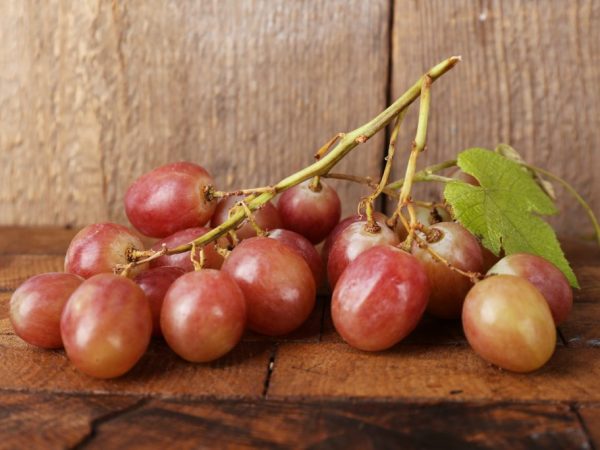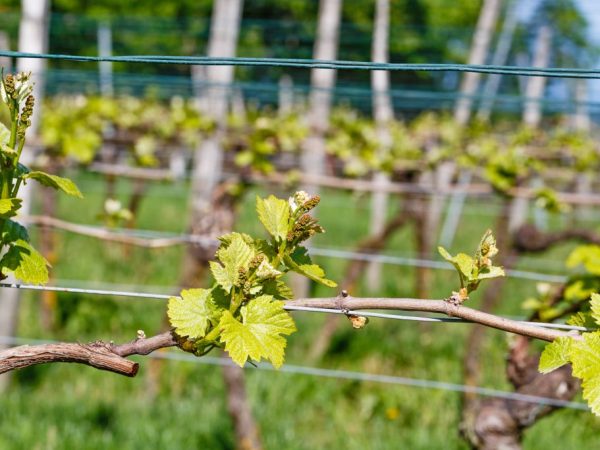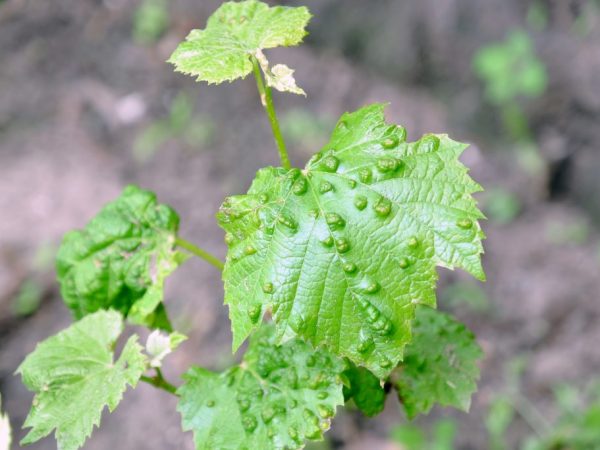Ruta grapes
Grapes are perennial shrubs that are cultivated for fruit. Juices, compotes, alcoholic drinks are made from berries, and they are also consumed raw. The Ruta grape is one of the most popular varieties for cultivation on a personal plot.

Ruta grapes
Characteristics of grapes
Ruta grape variety is a hybrid obtained by crossing Radiant raisins and Talisman. The variety belongs to the group of red canteens.
Ruta grapes have a high early maturity. The berries ripen within 100 days from the beginning of the growing season. It has an average annual yield.
The main advantage of the variety is the long period of time during which the berries can hang on the vine without spoiling. This makes Ruta grapes ideal for commercial cultivation. Also, the fruits tolerate transportation well.
The frost resistance of the variety is good. Ruta grapes normally tolerate temperatures down to -22 ° C.
Description of the bush
According to the description, the grapes reach 1.8-2 m in height. The branches are dense and fit well.
The variety is characterized by medium-sized leaves of a light green hue. Due to the strong root system, the Ruta grapes have a small number of stepchildren, which has a positive effect on the growth of the vine.
Description of fruits
The shape of the grape fruit resembles an oval or egg. The berries are large, reaching 32 cm in diameter. The weight of one fruit is 10-14 g. Bunches of medium looseness, have the shape of a cone, and their weight reaches 700 g.
The taste is sweet, with a slight, almost invisible sourness in the aftertaste. Muscat is also felt in the aroma. The pulp is juicy and fleshy, covered with a delicate and thin skin. The berries themselves are elastic, which allows them to be transported without the risk of damage. The variety is not prone to peas.
Chemical characteristics of Ruta grape berries:
- acidity - 7.65 g / l;
- sugar level - 19.35%.
Growing grapes
According to the description, Ruta grapes are not capricious to growing conditions and care.
The variety prefers loose soil with the required amount of moisture. It is better to plant seedlings in spring when constant heat comes, the second half of April is ideal.
Landing in the soil
Description and procedure for planting grapes in the ground:
- The selection of the site. The place must be protected from drafts and well lit.
- Digging a hole. It will be made in the form of a 40 by 40 cm square, and 60 cm deep.
- Creation of the bottom ball. A layer of soil mixture, water and mineral fertilizers are added to the bottom of the pit.
- Planting a seedling. It is placed in the lower mixture, covered with earth from above without tamping.
It is better to plant several cuttings in the hole at once. This increases germination. The distance between the bushes should not be less than 1.8 m. Also, a small depression is made near the seedling for a layer of mulch.
Plant care

Plants need to be tied up
Caring for a seedling depends on the season:
- Spring.The plant is freed from the covering material, excess water is removed from the surface of the soil to prevent waterlogging.
- Summer. Tying and plucking branches and regular examination for the presence of diseases are carried out.
- Autumn. After harvesting and loss of foliage, all weak branches are cut off and preparations for wintering are carried out. At the end of autumn, the plant is covered with a layer of soil.
- Winter. Make sure that the grapes are not heavily covered with snow and freeze.
Fertilizers
The following minerals are used as fertilizers for Ruta grapes:
- nitrogen;
- phosphorus;
- potassium;
Organic substances are also introduced:
- bird droppings;
- wood ash;
- peat;
- manure.
The first feeding is done at planting. It consists of superphosphate, potassium fertilizer and nitrogen. The second is applied 2 weeks before flowering. It includes an aqueous solution from the manure with the addition of phosphorus. The third is carried out when ripe berries appear. It is composed of superphosphate and nitrogen.
Watering
Ruta grapes require moisture during the following periods:
- after disembarkation;
- when tying;
- one week after pruning;
- when the shoots reach a height of 32 cm;
- 7 days before the beginning of the flowering period;
- with the formation of bunches;
- before harvesting;
- control water-saturating watering before wintering.
Diseases and pests

Pests can harm the plant
Ruta grapes are resistant to fungal diseases and rot. It is susceptible to harmful insects.
Diseases affecting the Ruta variety:
- Mildew. Fungal virus that infects green areas of branches and vines and passes on to berries. Causes wilting and loss of foliage and shoots.
- Gray rot. It manifests itself in a bloom of white on berries, bunches and branches and causes loss of yield.
- Anthractosis. Fungal infection affecting young bushes. It spreads to fruits, shoots and foliage and causes their loss.
- Black spot. It manifests itself in a change in the color of the vine, as well as the formation of rotten growths.
- Powdery mildew. Causes the death of segments of the bush.
Ruta grape pests:
- Grape aphid (phylloxera). It affects the root system and leads to their destruction. Infection occurs from water during watering, as well as during strong winds.
- Leaf roll. Caterpillars of this insect spread through foliage and bunches and consume most of the crop.
- Cicada. They are a carrier of viral diseases.
- Ticks. They affect foliage and feed on juices from tissues, which leads to drying out.
- Pillowcase. It is a sucking parasite that feeds on sap and spreads infections.
- Zlatka. Larvae and adult beetles devour leaves and make passages in the shoots, which causes rot.
Fight disease
Contact type fungicides are used to combat fungal diseases. They are used both for treatment and as a preventive measure.
Means for the treatment of fungi:
- Thanos;
- Horus;
- "Acrobat";
- Ridomil;
- "Topaz";
- "Strobe";
- "Tiovit".
When rot appears on the branches, they are removed. The wounds are covered with a growth stimulant. Also, copper chloride and Bordeaux mixture helps from rot.
Pest control
Fumigants are used against insects. Also, such funds as "Actellik", "Confidor" and "Zolon" help. To get rid of the caterpillars, the bushes are treated with an aqueous solution of nitraphene or benzophosphate.
Spraying the plant with actara helps from cicadas. For the treatment of ticks, "Neoron", "Fufan" and "Omite" are used. When a goldfish appears, it is required to spray with karbofos.
Prophylaxis
To prevent the appearance of diseases, the bushes are regularly examined. Also, the disease is prevented by the timely introduction of minerals.
From folk remedies, a decoction of dill or onion husks is used. Wood ash also helps.
Conclusion
The Ruta grape is an ideal variety for both commercial and private use. It makes a delicious wine due to its low acidity.
When choosing a planting material, you must carefully inspect it. The seedlings should be free of signs of fungus, rot and physical damage.


